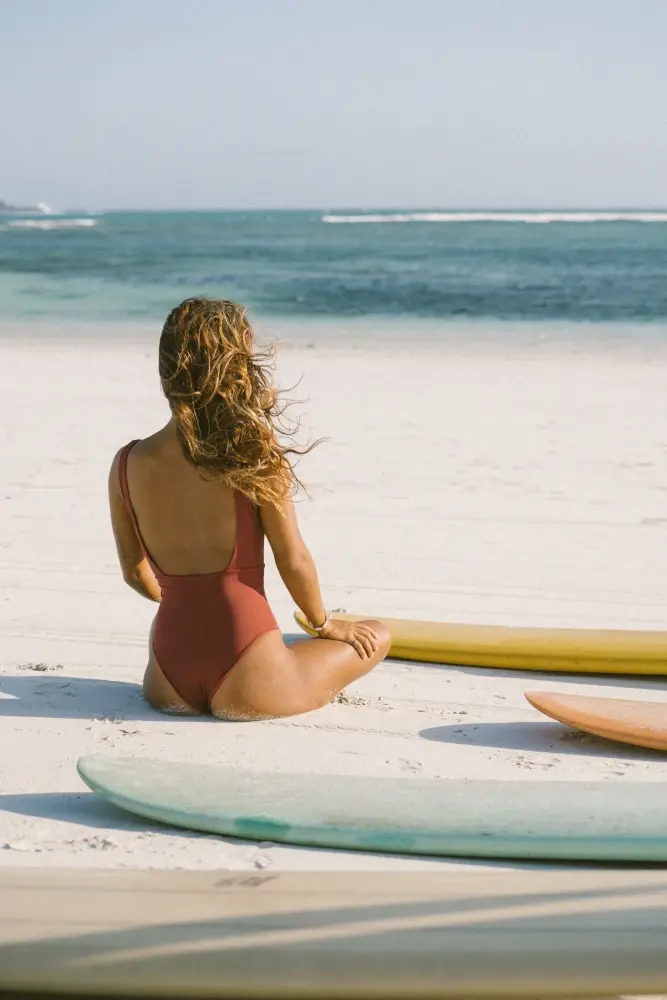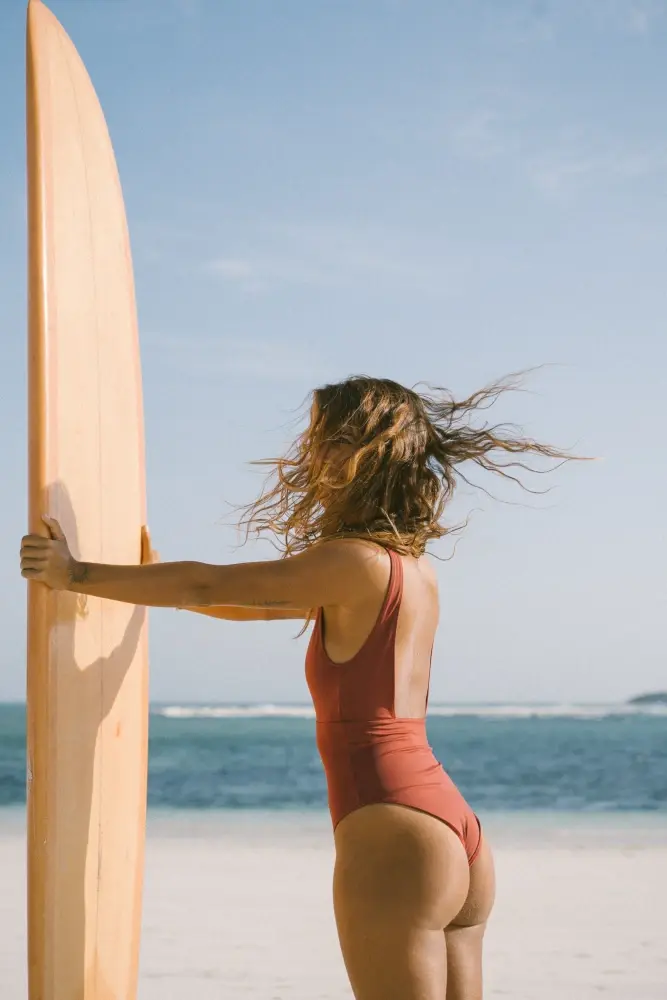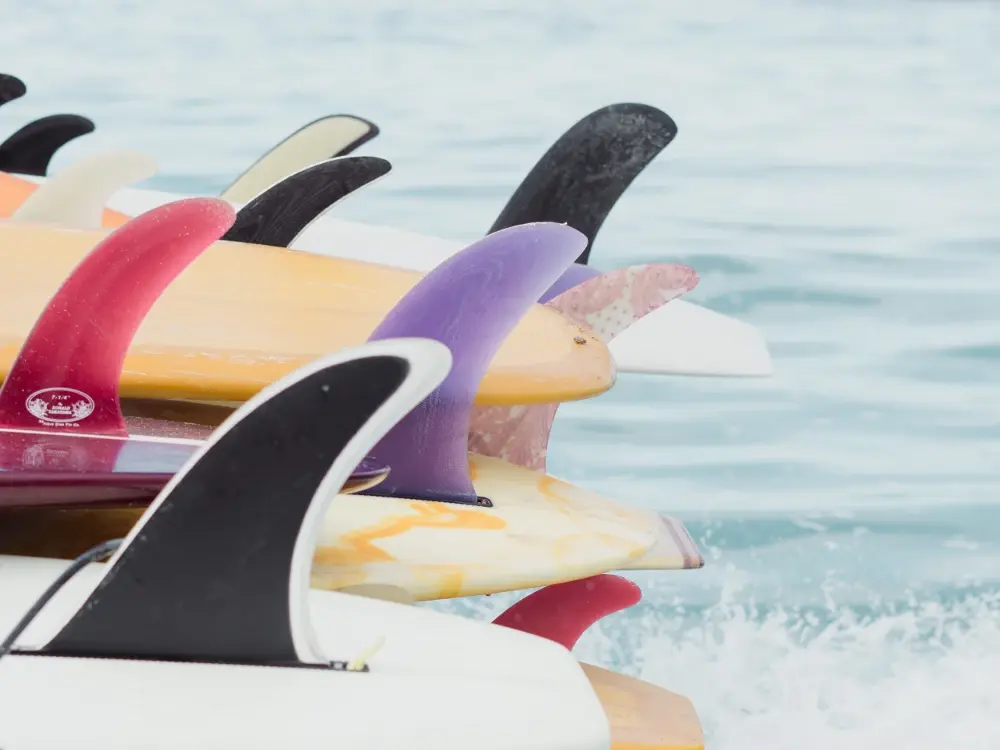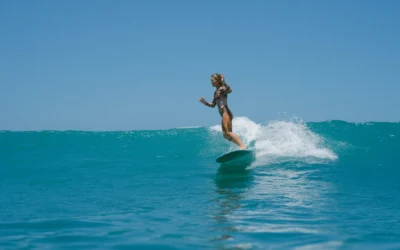Buying a car. Renting your first apartment. Going on your first overseas holiday. Finishing your university degree. Life is full of highlights, and buying your first longboard surfboard is up there with the best of them.
The decision to buy your first longboard marks an important point in your surfing journey.
No longer are you a casual surfer simply content with hiring boards. With the purchase of a longboard surfboard, you’re making your first intentional commitment to this amazing lifestyle we love so much.
But it’s not all sunshine and rainbows. If you’ve never bought a surfboard before, the sheer number of options and technical aspects can be overwhelming. Fortunately, we have a secret weapon when it comes to making this process less daunting.
Our surf director, Kayan.
Kayan was born on the Canary Islands where his father owned a surf shop. To say that his longboard surfboard knowledge runs deep would be an understatement. So who better to ask about buying your first longboard surfboard?
Learn from Kayan’s wisdom and avoid rookie mistakes by reading our guide below.


What is a longboard surfboard?
Surfboards come in all shapes and sizes. From performance-oriented shortboards to playful fishes and funky asymmetricals.
Longboards, as the name suggests, are longer than other surfboards and generally range from 8 to 12 feet. They’re characterised by their round nose, width and thickness which make them perfect for surfing longer, mellower waves.
Longboards were the original surfboard shape, ridden by ancient Hawaiian royals before and after Captain Cook arrived in the 18th century.
Longboarding, while dipping in popularity during the 80s and 90s, has seen a resurgence in recent years with more and more surfers appreciating the classic, graceful style of riding a longboard.
→ Read our most frequently asked questions about longboarding Lombok
What are the different types of longboard surfboards?
There’s an almost infinite number of variations when it comes to longboard surfboards, but we can categorise them into three main categories: classic logs, beginner boards and performance longboards.
Classic logs
Logs are what you would typically picture when someone mentions a longboard surfboard. They’re more suited to noseriding and trimming than performing turns. Logs have a rounded nose, wide and thick outline, and are typically single-fin setups.
Beginner boards
Beginner longboards are slightly more forgiving than logs, making them perfect for those who are just starting out.
They’re generally less heavy with softer features that make it easier to catch waves and maintain balance. Beginner boards often come with a thruster fin setup, which helps with stability and manoeuvrability.
Performance longboards
As the name suggests, performance longboards are designed for more advanced surfers who want to push the limits of what they can do on a longboard. They’re usually narrower and thinner than logs, allowing for quicker turns and more manoeuvrability.
Are different longboards suited to different waves?
Yes!
You must consider the type of waves you’ll be surfing before purchasing a longboard surfboard. For example, if you plan on riding smaller reef or point break-style waves, a log may be better at catching and maintaining speed.
On the other hand, if you’re looking to ride bigger, more powerful waves, a performance longboard may be your best bet for manoeuvrability and control.
Beginner boards, with their added stability and ease of use, are a good choice for those just starting out on smaller waves.
Do longboards come in different materials?
Longboard surfboards can be made from a variety of materials, including polyurethane foam (PU), epoxy resin (EPS) and even wood (paulownia, balsa, bamboo).
Each material has its pros and cons in terms of weight, durability and performance. For your first longboard, the most important thing is to choose a board that is well-constructed and suited to your needs.
In this case a PU longboard may be the best option as it’s more affordable and easier to find.
Should I buy brand new or secondhand?
Great question!
The thing about buying your first longboard surfboard is that you’ll probably outgrow it fairly quickly. As you progress in your surfing abilities, you may want to upgrade to a more specialised board. With that in mind, buying secondhand is a good option for first-time buyers.
→ 15 useful surf and longboarding tips for Lombok
However, if you have your heart set on a specific model or design and can afford to buy new, go for it!
Just make sure to do your research and read reviews before making your purchase.
5 tips from Kayan on choosing your first longboard
Kayan leads the surf program at Xanadu, collaborating with our expert surf guides and coaches to provide you with insightful feedback and guidance to enhance your surfing skills.
The stylish tipster is also super handy on a longboard, which is why we’ve asked him to share his top 5 tips for choosing your first longboard surfboard.
Take it away, Kayan.
Tip 5. Colours count
Go on an adventure to discover the colours that’ll suit you best!
Remember, lighter colours might look fabulous, but they tend to show their age a little faster. On the flip side, if you choose the darkest shades, you’ll find that they can melt your wax more easily, which can be a bit of a hassle.
Pick your path wisely and have fun with it! Exploring colours should be an exciting journey.
Tip 4. Custom boards from local shapers
If it’s within your means, try to work with a local shaper who’s familiar with the type of board you’re looking for.
Don’t skip the conversation with the shaper about your hopes for the board; it can really help and adds a personal touch to the process, making you feel more involved and ensuring your first ever board-buying process is more memorable.
→ How does longboarding differ from other types of surfing?
Tip 3. PU or EPS?
We can consider two primary materials for our boards. The first is polyurethane (PU), which is ideal for a classic board design.
It tends to be heavier, providing enhanced stability and balance that’s particularly beneficial for manoeuvres like cross-tepping.
The second option is epoxy (EPS), which is lighter in weight and can be a great choice for performance-oriented boards, allowing for greater agility and responsiveness on the water.
Tip 2. How do you imagine your style of surfing?
What type of surfing are you looking to do with that board?
There are various options available, including high-performance longboards designed for advanced manoeuvres and more classic logs that emphasise style and grace.
Your choice will depend on whether you want to execute more radical moves, like sharp turns and aggressive tricks, or if you prefer smoother, more gentle manoeuvres that highlight a softer approach to riding the waves.
Consider your surfing style and goals to determine which board will best suit your needs!
Tip 1. Think about the type of waves you want to surf
Lastly, when choosing a longboard, it’s crucial to consider the type of waves you want to surf.
Although all longboards may appear similar at first glance, they can vary significantly in design and performance based on your intended use. Different shapes, sizes and materials can greatly affect how the board handles in the water, influencing your overall surfing experience.
Do your research before selecting a longboard. Make sure it aligns with your surfing style and the specific wave conditions you plan to encounter.
This thoughtful approach will ensure you maximise your enjoyment of your first board-buying experience.
Final thoughts
There’s way more we could say on the topic of buying your first longboard. Ultimately, the best way to find the right board for you is by trying out different options.
We have a bunch of longboards available to use at Xanadu. Our Suket boards are offered to Special Longboard Retreat guests while our other premium quality longboards are available for general use. Either way, you’ll have the opportunity to test different longboards in a variety of wave types.
You’ll quickly come to terms with what you like and don’t like about each board and find it easier to narrow down your options!




